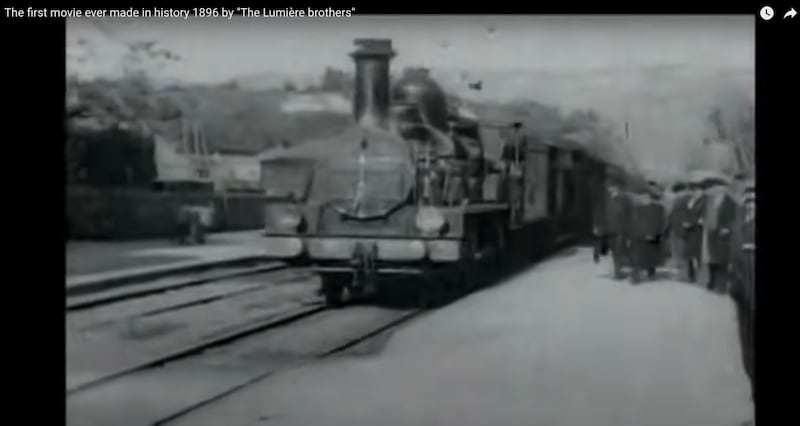On Dec. 28, 1895, the first public movie showing happened in the Grand Café in Paris, presented by the Lumière brothers.
The pair, Auguste and Louis Lumière, wanted to invent a device that would allow large groups to watch the same film together and began working on the project in 1894. They invented the Cinématographe, which was operated by a hand crank and projected film at 16 frames a second, per History.
The film the brothers showed in December was titled “Arrival of a Train” and depicted a train approaching a stop in France. It was filmed in the southern coastal town of La Ciotat, Bouches-du-Rhône, France.
Did the train in the film really cause panic in theaters?
An urban myth (which also appears in the 2011 film “Hugo”) is that this first audience in 1895 was so shocked by the film that many ran to the back of the screening room in fear that the train would hit them, per Atlas Obscura.
German film scholar Martin Loiperdinger wrote an article published by the University of Minnesota Press exploring evidence that this myth is simply that. He wrote, “There is no evidence at all about any crowd panic in Paris or elsewhere during screenings of ‘L’Arrivée d’un train à La Ciotat’ — neither police reports nor newspaper reporting.”
Loiperdinger added that it seems unlikely that any viewer would have mistaken the grainy, black-and-white footage to be a real train that could put them in danger.
Cinématographe influence on modern cinema
After generating lines a quarter of a mile long in France, Cinématographe showings found their way to Great Britain and stirred similar interest there, according to the Science and Media Museum.
The Lumière brothers sent their film cameras out to Japan, the Middle East and Russia to record, and their films became a worldwide sensation. They showed this footage in Lumière cinemas, according to Lomography.
After 10 years, the brothers switched paths and moved on to projects involving colored photographs, called “Lumière Autochrome,” per History.


